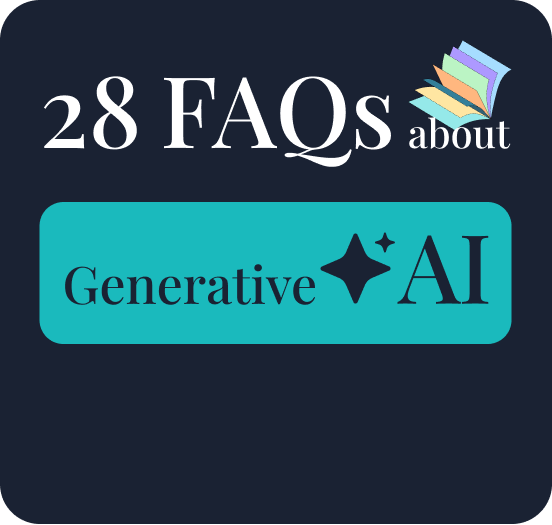How to Create Chatbot for Website Success

Creating a chatbot for your website can significantly enhance user experience and drive success. With 80% of consumers reporting positive interactions with chatbots, it's clear they play a crucial role in customer engagement. To achieve this, you need to focus on four key areas: planning, design, technical integration, and optimization. Start by defining your chatbot's purpose and understanding your audience. Choose a platform like Sobot, known for its seamless integration and user-friendly interface. Design an engaging conversation flow and test thoroughly to ensure smooth operation. By following these steps, you'll be well on your way to mastering how to create chatbot for website success.
How to Create Chatbot for Website Success
Creating a chatbot for your website involves several crucial steps. Let's dive into the planning and design phases, which lay the foundation for a successful chatbot.
Planning Your Chatbot
Defining Goals and Objectives
First, you need to define clear goals and objectives for your chatbot. What do you want it to achieve? Whether it's improving customer service, increasing sales, or providing 24/7 support, having a clear purpose will guide your development process. For instance, many companies have successfully implemented chatbots to streamline operations and enhance customer engagement. By setting specific goals, you ensure your chatbot aligns with your business needs.
Understanding Your Target Audience
Next, understanding your target audience is essential. Who will interact with your chatbot? Knowing your audience helps tailor the chatbot's responses and personality to meet their expectations. Consider factors like age, preferences, and common queries. This understanding allows you to create a chatbot that resonates with users, enhancing their experience and satisfaction.
Choosing the Right Platform
Choosing the right platform is a critical step in how to create chatbot for website success. Platforms like Sobot offer seamless integration and user-friendly interfaces, making them ideal for businesses looking to implement chatbots efficiently. Sobot's solutions provide robust features that cater to various business needs, ensuring your chatbot operates smoothly and effectively.
Designing the Chatbot
Crafting the Conversation Flow
Crafting an engaging conversation flow is vital. Your chatbot should guide users through interactions naturally and intuitively. Consider using A/B testing strategies to optimize this flow, ensuring it meets user expectations and enhances their experience. Successful chatbots often employ well-designed conversation flows that keep users engaged and satisfied.
Developing the User Interface
The user interface (UI) plays a significant role in user interactions. A well-designed UI makes it easy for users to navigate and interact with your chatbot. Focus on simplicity and clarity, ensuring users can access information quickly and efficiently. A good UI enhances the overall user experience, making your chatbot more effective.
Establishing the Chatbot's Personality
Finally, establish your chatbot's personality. This aspect adds a human touch to interactions, making them more relatable and enjoyable. Consider your brand's voice and tone when developing the chatbot's personality. A well-defined personality can significantly improve user engagement and satisfaction, contributing to your website's success.
By following these steps, you can effectively plan and design a chatbot that meets your business objectives and enhances user experience. Understanding how to create chatbot for website success involves careful planning and thoughtful design, ensuring your chatbot becomes a valuable asset to your website.
Benefits of Integrating Chatbots

Integrating chatbots into your website can transform the way you interact with customers. Let's explore the benefits that make chatbots a valuable asset for your business.
Improved Customer Service
24/7 Availability
Chatbots provide round-the-clock service, ensuring your customers receive assistance whenever they need it. Unlike human agents, chatbots don't require breaks or sleep. This constant availability can significantly enhance customer satisfaction. In fact, 62% of consumers prefer using a chatbot over waiting for a live agent. By learning how to create chatbot for website success, you ensure your business remains accessible at all times.
Personalized User Interactions
Chatbots can tailor interactions based on user data, offering personalized experiences that resonate with your audience. They can remember past interactions and preferences, making each conversation feel unique. This personalization boosts engagement and satisfaction. With 80% of consumers reporting positive experiences with chatbots, it's clear that personalized interactions are a key factor in their success.
Increased Engagement
Interactive User Experience
Chatbots offer an interactive experience that keeps users engaged. They can guide users through processes, answer questions, and even entertain. This interactivity makes your website more dynamic and appealing. By mastering how to create chatbot for website success, you can transform passive visitors into active participants, enhancing their overall experience.
Real-time Assistance
Providing real-time assistance is crucial in today's fast-paced world. Chatbots can instantly address user queries, reducing wait times and improving satisfaction. 69% of consumers were satisfied with their last chatbot interaction, highlighting the effectiveness of real-time support. Implementing chatbots ensures your website meets user expectations for quick and efficient service.
Operational Efficiency
Automation of Repetitive Tasks
Chatbots excel at automating repetitive tasks, freeing up human resources for more complex issues. They can handle inquiries, process orders, and manage appointments without human intervention. This automation streamlines operations and increases efficiency. Learning how to create chatbot for website success can lead to significant improvements in your business processes.
Cost Reduction
By automating tasks and providing 24/7 support, chatbots can reduce operational costs. They minimize the need for large customer service teams, allowing you to allocate resources more effectively. This cost reduction is a major advantage for businesses of all sizes. With platforms like Sobot, known for their seamless integration and robust features, you can implement chatbots efficiently and economically.
Incorporating chatbots into your website offers numerous benefits, from improved customer service to increased engagement and operational efficiency. By understanding how to create chatbot for website success, you can leverage these advantages to enhance your business and provide exceptional user experiences.
Technical Integration of Your Chatbot
Integrating a chatbot into your website involves several technical steps. Let's explore how you can seamlessly incorporate a chatbot using Sobot's robust features.
Selecting the Right Software
Choosing the right software is crucial for successful integration. Sobot offers a range of integration options that cater to various business needs.
Exploring Sobot's Integration Options
Sobot provides integration with platforms like WhatsApp, Facebook, and Twitter. This flexibility allows you to manage customer interactions from a centralized workspace. By using Sobot, you can enhance efficiency and streamline communication across multiple channels.
Ensuring Compatibility with Existing Systems
Before integrating, ensure that Sobot is compatible with your existing systems. This step prevents potential conflicts and ensures smooth operation. Sobot's solutions are designed to work seamlessly with various platforms, making it an ideal choice for businesses looking to enhance their customer service capabilities.
Setting Up APIs and Webhooks
APIs and webhooks play a vital role in connecting your chatbot with other systems. Here's how you can set them up effectively.
Configuring API Endpoints
Start by configuring API endpoints to enable data exchange between your chatbot and other applications. Sobot provides detailed documentation to guide you through this process, ensuring a smooth setup.
Testing Data Exchange
Once configured, test the data exchange to ensure everything works correctly. This step helps identify any issues early on, allowing you to address them before full deployment. Sobot's user-friendly interface makes testing straightforward and efficient.
Conducting Thorough Testing
Testing is essential to ensure your chatbot performs optimally. Here's how you can conduct thorough testing.
Identifying and Fixing Bugs
During testing, identify and fix any bugs that may arise. This process ensures your chatbot operates smoothly and provides a positive user experience. Sobot offers tools to help you pinpoint and resolve issues quickly.
Ensuring Robust Performance
Finally, ensure your chatbot delivers robust performance. Regular testing and updates help maintain high standards of service. With Sobot, you can continuously monitor and optimize your chatbot to meet evolving customer needs.
By following these steps, you can successfully integrate a chatbot into your website using Sobot. This integration enhances customer interactions and improves operational efficiency, contributing to your website's success.
Monitoring and Optimizing Chatbot Performance

Once you've integrated a chatbot into your website, the journey doesn't end there. You need to keep an eye on its performance and make necessary tweaks to ensure it continues to meet your business goals. Here's how you can effectively monitor and optimize your chatbot's performance.
Tracking Key Performance Metrics
Analyzing User Engagement
To understand how well your chatbot is performing, start by analyzing user engagement. Look at metrics like the number of interactions, session duration, and user retention rates. These figures give you insights into how users are interacting with your chatbot. For instance, if you notice a drop in engagement, it might be time to revisit your conversation flow or chatbot personality. By keeping a close eye on these metrics, you can ensure your chatbot remains a valuable asset to your website.
Monitoring Response Accuracy
Response accuracy is another critical metric. You want your chatbot to provide correct and helpful answers to user queries. Regularly review the chatbot's responses to ensure they align with user expectations. If you find inaccuracies, consider retraining your chatbot or updating its knowledge base. This step is crucial for maintaining user trust and satisfaction.
Gathering User Feedback
Implementing Feedback Loops
User feedback is a goldmine of information. Implement feedback loops to gather insights directly from users. Ask them about their experience and any improvements they'd like to see. This feedback helps you identify areas where your chatbot excels and where it needs improvement. By actively seeking user input, you can make informed decisions about future updates.
Using Feedback for Continuous Improvement
Once you've gathered feedback, use it to drive continuous improvement. Analyze the data to identify common themes or issues. Then, make the necessary adjustments to enhance your chatbot's performance. This iterative process ensures your chatbot evolves alongside user needs and expectations.
Making Necessary Adjustments
Updating Features Based on Insights
Based on the insights you've gathered, update your chatbot's features. This could involve adding new functionalities, refining existing ones, or even changing the chatbot's personality. By staying responsive to user needs, you ensure your chatbot remains relevant and effective.
Enhancing User Satisfaction
Ultimately, your goal is to enhance user satisfaction. Regularly update your chatbot to address user feedback and improve its performance. This proactive approach keeps users happy and engaged, contributing to your website's success.
By focusing on these areas, you can effectively monitor and optimize your chatbot's performance. Remember, creating a chatbot for website success is an ongoing process. Stay committed to improvement, and your chatbot will continue to deliver value to your business.
Integrating chatbots into your website is a game-changer for enhancing user experience and boosting performance. With platforms like Sobot, you can seamlessly incorporate chatbots that cater to your business needs. Sobot's solutions offer robust features and easy integration, making it an ideal choice for businesses aiming to improve customer interactions.
"Chatbots can provide value-added services that enhance the customer experience and drive engagement beyond simple transactions." - LinkedIn
Consider the success story of HomeWarrantyReviews.com, which increased their conversion rate by 20% using a chatbot. This demonstrates the potential impact on your business. Start the integration process today and watch your website thrive.
See Also
Effortless Ways to Build a Website Chatbot
Simple Methods to Integrate a Chatbot on Your Site
Step-by-Step Guide to Adding a Chatbot Online
